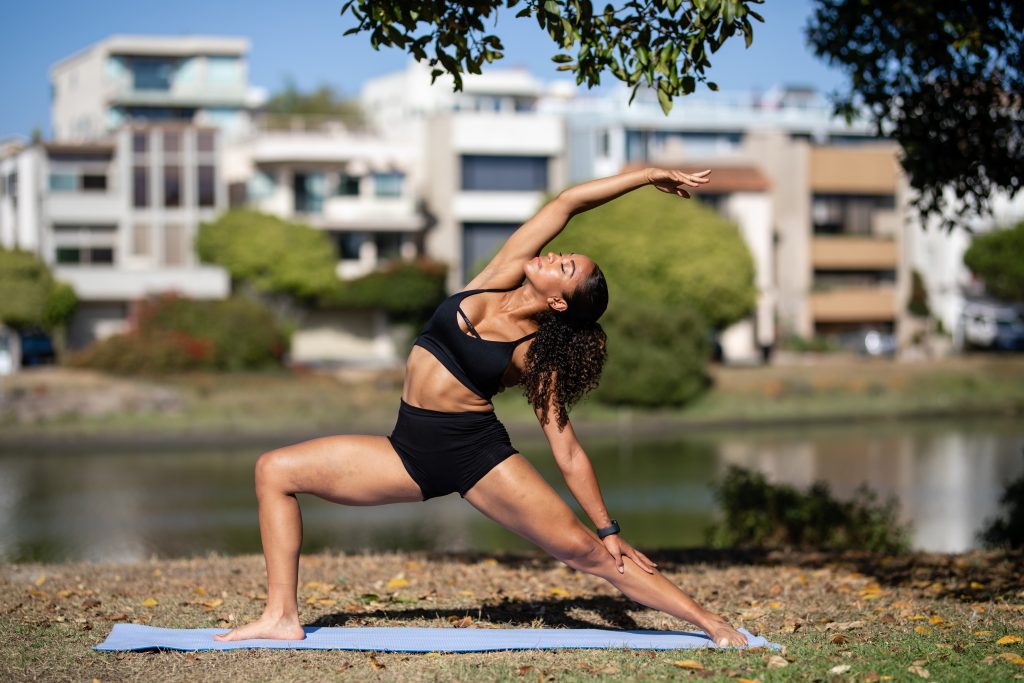Learn how practicing yoga can help lower high blood pressure and improve overall cardiovascular health.
Discover the Benefits of Yoga for High Blood Pressure
Are you tired of feeling like your blood pressure is soaring sky high? Well, we’ve got some good news for you! Yoga might just be the answer you’ve been searching for. In this article, we’ll take a deep dive into the world of yoga and explore how this ancient practice can help you manage your high blood pressure. So, roll out your mat and get ready to discover a whole new way to keep your blood pressure in check!
Understanding High Blood Pressure

Before we dive into the benefits of yoga, it’s important to understand what high blood pressure is all about. High blood pressure, also known as hypertension, occurs when the force of blood against the walls of your arteries becomes too high. This can put a strain on your heart and increase your risk of serious health issues like heart disease and stroke. It’s a sneaky little devil that often goes unnoticed until it’s too late. But fear not, yoga is here to save the day!
Let’s take a closer look at the causes of high blood pressure. While there are many factors that can contribute to this condition, some common culprits include a sedentary lifestyle, poor diet, stress, and genetics. Yes, that’s right. Thanks, Grandma and Grandpa! But don’t worry, you don’t have to be a victim of your genetic lottery. With a regular yoga practice, you can take control of your blood pressure and show those pesky genes who’s boss!
Now, let’s talk about the symptoms and risks of high blood pressure. This condition is often called the silent killer because it can creep up on you without any noticeable symptoms. One minute you’re going about your day, and the next, your blood pressure is off the charts. Scary, right? That’s why it’s crucial to monitor your blood pressure regularly, especially if you have risk factors like a family history of hypertension or a diet that consists mainly of cheesy puffs.
The risks associated with high blood pressure are not to be taken lightly. It can cause damage to your arteries, heart, brain, and kidneys. In addition, it can lead to vision problems, sexual dysfunction, and even memory loss. But fear not, brave warrior! Yoga is here to guide you towards a healthier and more balanced life.
When you practice yoga, you engage in gentle movements, deep breathing, and meditation. These practices have been shown to reduce stress levels, improve cardiovascular health, and promote overall well-being. By incorporating yoga into your daily routine, you can lower your blood pressure, strengthen your heart, and reduce your risk of developing serious health complications.
Furthermore, yoga helps to improve blood circulation, which is essential for maintaining healthy blood pressure levels. As you move through different yoga poses, your muscles contract and relax, creating a pumping action that enhances blood flow throughout your body. This increased circulation not only helps to lower blood pressure but also delivers oxygen and nutrients to your organs, keeping them in optimal condition.
Another benefit of yoga for high blood pressure is its ability to reduce stress. When you’re stressed, your body releases stress hormones like cortisol, which can cause your blood vessels to constrict and your blood pressure to rise. By practicing yoga, you activate your body’s relaxation response, which helps to counteract the effects of stress. Through deep breathing and mindful movement, you can calm your mind, relax your body, and bring your blood pressure back to a healthy range.
In addition to the physical benefits, yoga also promotes mental and emotional well-being. It provides a space for self-reflection, self-care, and self-acceptance. By cultivating a regular yoga practice, you can develop a greater sense of inner peace, resilience, and mindfulness. These qualities can help you navigate the challenges of life with grace and reduce the stress that may contribute to high blood pressure.
So, if you’re looking for a natural and holistic approach to managing high blood pressure, look no further than yoga. With its myriad of benefits for both the body and mind, yoga can be a powerful tool in your journey towards optimal health and well-being. Start your yoga practice today and take control of your blood pressure for a healthier and happier life!
The Science Behind Yoga and Blood Pressure
Now that we’ve laid the groundwork, let’s delve into the scientific benefits of yoga for your blood pressure. Grab your lab coat and safety goggles, because things are about to get nerdy!
How Yoga Affects the Cardiovascular System
When you step onto your mat and flow through those beautiful yoga poses, you’re not just toning your biceps and showing off your impressive flexibility. Oh no, my friend. You’re also giving your cardiovascular system a serious workout.
Yoga increases your heart rate, improves circulation, and strengthens your heart muscle. It also reduces the stiffness of blood vessels, making it easier for blood to flow freely. This means less strain on your heart and lower blood pressure. It’s like a magic trick, but without the top hat and cape!
But how exactly does yoga achieve these cardiovascular benefits? Well, let’s break it down. As you move through the various poses, your muscles require more oxygen. To meet this demand, your heart starts pumping faster, delivering oxygen-rich blood to your muscles. This increased heart rate not only improves circulation but also helps your heart become stronger over time. Additionally, the stretching and bending involved in yoga poses stimulate the production of nitric oxide, a molecule that relaxes and dilates blood vessels. This relaxation of blood vessels reduces resistance to blood flow, allowing it to move more smoothly and effortlessly. As a result, your blood pressure decreases, and your cardiovascular system becomes more efficient.
Yoga and Stress Reduction: A Key to Lower Blood Pressure
Stress has a funny way of sneaking into our lives and wreaking havoc on our bodies. It’s like that unwanted houseguest who never knows when to leave. But fear not, brave yogi! Yoga is here to kick stress to the curb and restore your sense of calm.
Through deep breathing exercises and meditation, yoga activates your body’s relaxation response. It reduces the levels of stress hormones like cortisol and adrenaline, and helps you find your zen. By keeping stress at bay, yoga can help lower your blood pressure and keep it within a healthy range.
But how does this stress reduction actually happen? Well, let’s dive into the science. Deep breathing exercises, such as the popular “Ujjayi breath,” stimulate the vagus nerve, which is responsible for activating the parasympathetic nervous system. This system is often referred to as the “rest and digest” response, as it counteracts the “fight or flight” response triggered by stress. When the parasympathetic nervous system is activated, your heart rate slows down, your blood pressure decreases, and your body enters a state of deep relaxation. Similarly, the practice of meditation during yoga helps calm the mind and release tension, allowing you to let go of stress and find inner peace.
So, the next time you roll out your yoga mat, remember that you’re not just engaging in a physical exercise. You’re also embarking on a journey to improve your cardiovascular health and find serenity amidst the chaos of life.
Different Yoga Poses for Blood Pressure Management
Now that you’re all warmed up with the science stuff, let’s explore some practical ways to incorporate yoga into your daily routine. Get ready to strike a pose, or two, or fifty!
Restorative Yoga Poses
If you’re new to the world of yoga or just looking for a calming, therapeutic practice, restorative yoga poses are your new best friends. These gentle poses allow you to relax and release tension, while also gently stretching your muscles. Some restorative poses that are particularly beneficial for blood pressure management include Legs-Up-the-Wall Pose, Child’s Pose, and Corpse Pose. Trust us, these poses are as soothing as a warm cup of herbal tea on a chilly winter’s day.
Breathing Techniques in Yoga
Remember how we mentioned deep breathing exercises earlier? Well, now it’s time to take a deep breath and put those techniques into practice. Pranayama, or yogic breathing, is a powerful tool for managing high blood pressure. It involves slow, controlled breathing through the nose, focusing on lengthening the exhale. By slowing down your breath and engaging in mindful breathing exercises, you can activate your body’s relaxation response and bring your blood pressure back down to earth.
Incorporating Yoga into Your Daily Routine
So, now that you’ve got the lowdown on the benefits of yoga and some fancy poses to try, how can you incorporate yoga into your daily routine without becoming a human pretzel? Fear not, flexible friend! We’ve got some tips to help you get started.
Tips for Beginners
If you’re new to yoga, it can be intimidating to jump right into a full-blown hour-long practice. That’s why we recommend starting small and building up from there. Begin with just a few minutes of gentle stretching and deep breathing each day. Gradually increase the length and intensity of your practice as you become more comfortable. Remember, Rome wasn’t built in a day, and neither was a master yogi!
Maintaining Consistency in Your Yoga Practice
Consistency is key when it comes to reaping the benefits of yoga for your blood pressure. Aim to practice yoga at least three times a week, but don’t beat yourself up if life gets in the way. If you miss a day or two, just pick up where you left off. It’s not a competition, and there’s no gold medal waiting for you at the end. The most important thing is to listen to your body and allow yoga to become a sustainable part of your life.
Precautions and Considerations for Hypertensive Yoga Practitioners
Before you roll out your mat and start flowing into those impressive yoga poses, it’s important to take note of some precautions and considerations. After all, we want you to stay safe and feel empowered on your yoga journey.

When to Avoid Certain Yoga Poses
If you have high blood pressure, there are certain yoga poses that you may want to avoid to prevent any unwanted spikes in your blood pressure. Poses that involve deep backbends or inversions, like Camel Pose or Headstand, can increase blood pressure and put strain on your cardiovascular system. It’s always a good idea to speak with your healthcare provider or a qualified yoga instructor before attempting these poses.
Consulting with Your Healthcare Provider
While yoga can work wonders for managing high blood pressure, it’s essential to consult with your healthcare provider before starting any new exercise regimen. They can provide personalized advice based on your medical history and help you determine the best approach for your unique needs. Plus, it’s always nice to have someone cheering you on as you embark on your yoga adventure!
So there you have it, brave yogi! The benefits of yoga for high blood pressure are vast and mighty. By incorporating yoga into your daily routine, you can reduce stress, strengthen your cardiovascular system, and keep your blood pressure in check. Remember, consistency is key, and always listen to your body. So, step onto your mat, take a deep breath, and let yoga be your guide on this incredible journey towards a healthier, happier you. Namaste!







